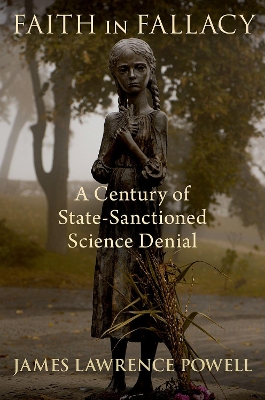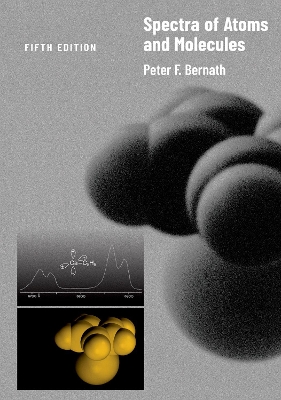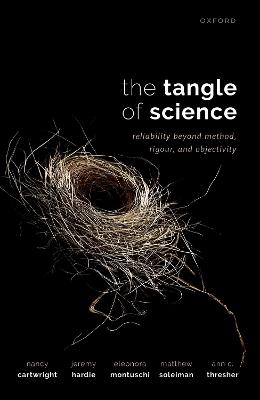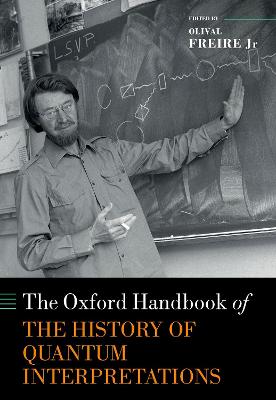Our Changing Views of Photons
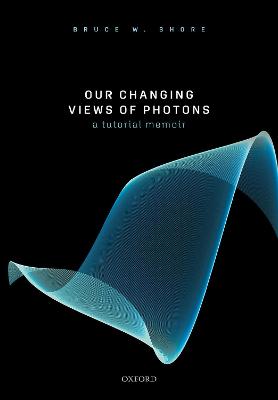 -10%
portes grátis
-10%
portes grátis
Our Changing Views of Photons
A Tutorial Memoir
Shore, Bruce W.
Oxford University Press
09/2020
512
Dura
Inglês
9780198862857
15 a 20 dias
1144
Descrição não disponível.
Preface
The Cartoons
Introduction
1.1: Overview of the memoir narrative
1.2: Preliminaries: Defining terms
1.3: Models of physical phenomena
1.4: Caveats
Basic background: Everyday physics and its math
2.1: Some mathematics
2.2: Particles: Elementary and structured
2.3: Aggregates: Fluids, flows, waves, and granules
2.4: Free space; the Vacuum
2.5: Forces and vectors
2.6: Energy and heat
2.7: Equations of change: Particles and fluids
2.8: Light: Electromagnetic radiation
2.9: Possible radiation granularity; Photons
2.10: Angular momentum: Orbital and spin
2.11: Probabilities
2.12: Quantum states
The photons of P;anck, Einstein and Bohr
3.1: Thermal light: Planck quanta
3.2: Spectroscopy: Photons as energy packets
3.3: Discrete energies of atoms
3.4: The Bohr-Einstein emission and absorption photons
3.5: The photoelectric effect; The Einstein photon
3.6: Scattered photons: Doppler and Compton
3.7: Revised views of Planck, Einstein and Compton photons
3.8: Beyond emitted and absorbed quanta
3.9: Bohr
The Photons of Dirac
4.1: Modes: Electron orbitals and cavity radiation; Superpositions
4.2: Dirac's photons: Mode increments
4.3: Emission and absorption photons
4.4: Comment: Next steps
Photons as population changers
5.1: Interactions, decoherence and ensembles
5.2: Einstein-equation populations; Equilibrium
5.3: Einstein-equation photons; Lasers
5.4: Coherent population changes
5.5: Rabi oscillations
5.6: Assured two-state excitation
5.7: Single atoms, single boxed photons
5.8: The Jaynes-Cummings model; Evidence for photons
5.9: Coherent change; Interaction linkages
5.10: Morris-Shore photons
5.11: Pulsed excitation
5.12: Objectives of quantum-state manipulations; Superpositions
Photon messengers
6.1: Astronomical photons
6.2: Scattered photons
6.3: Electrical circuits
6.4: Information
6.5: Photons as information carriers
6.6: The no-cloning theorem
6.7: Correlation and entaglement
Manipulating photons
7.1: Particle conservation
7.2: Creating single photons
7.3: Detecting photons
7.4: Altering photons
7.5: Storing and restoring photons
7.6: Verifying photons
Overview; Ways of regarding photons
8.1: Historical photons
8.2: Pulsed photons
8.3: Steady, Feynman photons
8.4: Crowds and singles
8.5: Interacting photons
8.6: Doing without photons
8.7: Alternatives to photons
8.8: Contemporary evidence for photons
8.9: Photons in biology
Finale
9.1: A concluding thought
9.2: Basic reference
9.3: Acknowledgements
Appendix A: Atoms and their mathematics
A.1: Classical equations of particle motion
A.2: Measurement; Sizes
A.3: Abstract vector spaces
A.4: Quantization
A.5: Wave mechanics and wavefunctions
A.6: Phase space
A.7: Matrix mechanics and operators
A.8: The statevector
A.9: The time-dependant Schrodinger equation
A.10: Two-state coherent excitation
A.11: Degeneracies and ensembles
A.12: Adiabatic elimination; Multiphoton interaction
A.13: Adiabatic change
A.14: Density matrices and mixed states
A.15: Three-state pulsed coherent excitation
A.16: Radiative rate equations
A.17: Alegebras
A.18: Group theory
A.19: The Standard Model of particle physics
Appendix B: Radiation and photons
B.1: Electromagnetic equations in free space
B.2: Classical field modes; Examples
B.3: Quantized field modes; Dirac photons
B.4: Photon number-statesuperpositions
B.5: Temporal variations; Quantum character
B.6: Alternative views of photons
B.7: Thermal equilibrium; Planck photons
B.8: Incoherent radiation; Photon crowds
Appendix C: Couples atom and field equations
C.1: The Maxwell equations in matter
C.2: Bulk-matter steady response
C.3: Bulk-matter transient sources
C.4: The atom-photon Hamiltonian
C.5: The Jaynes-Cummings model
C.6: Cavity STIRAP
C.7: Paired, product spaces; Entanglement
C.8: The annual greeting cards
References
Index
The Cartoons
Introduction
1.1: Overview of the memoir narrative
1.2: Preliminaries: Defining terms
1.3: Models of physical phenomena
1.4: Caveats
Basic background: Everyday physics and its math
2.1: Some mathematics
2.2: Particles: Elementary and structured
2.3: Aggregates: Fluids, flows, waves, and granules
2.4: Free space; the Vacuum
2.5: Forces and vectors
2.6: Energy and heat
2.7: Equations of change: Particles and fluids
2.8: Light: Electromagnetic radiation
2.9: Possible radiation granularity; Photons
2.10: Angular momentum: Orbital and spin
2.11: Probabilities
2.12: Quantum states
The photons of P;anck, Einstein and Bohr
3.1: Thermal light: Planck quanta
3.2: Spectroscopy: Photons as energy packets
3.3: Discrete energies of atoms
3.4: The Bohr-Einstein emission and absorption photons
3.5: The photoelectric effect; The Einstein photon
3.6: Scattered photons: Doppler and Compton
3.7: Revised views of Planck, Einstein and Compton photons
3.8: Beyond emitted and absorbed quanta
3.9: Bohr
The Photons of Dirac
4.1: Modes: Electron orbitals and cavity radiation; Superpositions
4.2: Dirac's photons: Mode increments
4.3: Emission and absorption photons
4.4: Comment: Next steps
Photons as population changers
5.1: Interactions, decoherence and ensembles
5.2: Einstein-equation populations; Equilibrium
5.3: Einstein-equation photons; Lasers
5.4: Coherent population changes
5.5: Rabi oscillations
5.6: Assured two-state excitation
5.7: Single atoms, single boxed photons
5.8: The Jaynes-Cummings model; Evidence for photons
5.9: Coherent change; Interaction linkages
5.10: Morris-Shore photons
5.11: Pulsed excitation
5.12: Objectives of quantum-state manipulations; Superpositions
Photon messengers
6.1: Astronomical photons
6.2: Scattered photons
6.3: Electrical circuits
6.4: Information
6.5: Photons as information carriers
6.6: The no-cloning theorem
6.7: Correlation and entaglement
Manipulating photons
7.1: Particle conservation
7.2: Creating single photons
7.3: Detecting photons
7.4: Altering photons
7.5: Storing and restoring photons
7.6: Verifying photons
Overview; Ways of regarding photons
8.1: Historical photons
8.2: Pulsed photons
8.3: Steady, Feynman photons
8.4: Crowds and singles
8.5: Interacting photons
8.6: Doing without photons
8.7: Alternatives to photons
8.8: Contemporary evidence for photons
8.9: Photons in biology
Finale
9.1: A concluding thought
9.2: Basic reference
9.3: Acknowledgements
Appendix A: Atoms and their mathematics
A.1: Classical equations of particle motion
A.2: Measurement; Sizes
A.3: Abstract vector spaces
A.4: Quantization
A.5: Wave mechanics and wavefunctions
A.6: Phase space
A.7: Matrix mechanics and operators
A.8: The statevector
A.9: The time-dependant Schrodinger equation
A.10: Two-state coherent excitation
A.11: Degeneracies and ensembles
A.12: Adiabatic elimination; Multiphoton interaction
A.13: Adiabatic change
A.14: Density matrices and mixed states
A.15: Three-state pulsed coherent excitation
A.16: Radiative rate equations
A.17: Alegebras
A.18: Group theory
A.19: The Standard Model of particle physics
Appendix B: Radiation and photons
B.1: Electromagnetic equations in free space
B.2: Classical field modes; Examples
B.3: Quantized field modes; Dirac photons
B.4: Photon number-statesuperpositions
B.5: Temporal variations; Quantum character
B.6: Alternative views of photons
B.7: Thermal equilibrium; Planck photons
B.8: Incoherent radiation; Photon crowds
Appendix C: Couples atom and field equations
C.1: The Maxwell equations in matter
C.2: Bulk-matter steady response
C.3: Bulk-matter transient sources
C.4: The atom-photon Hamiltonian
C.5: The Jaynes-Cummings model
C.6: Cavity STIRAP
C.7: Paired, product spaces; Entanglement
C.8: The annual greeting cards
References
Index
Este título pertence ao(s) assunto(s) indicados(s). Para ver outros títulos clique no assunto desejado.
Preface
The Cartoons
Introduction
1.1: Overview of the memoir narrative
1.2: Preliminaries: Defining terms
1.3: Models of physical phenomena
1.4: Caveats
Basic background: Everyday physics and its math
2.1: Some mathematics
2.2: Particles: Elementary and structured
2.3: Aggregates: Fluids, flows, waves, and granules
2.4: Free space; the Vacuum
2.5: Forces and vectors
2.6: Energy and heat
2.7: Equations of change: Particles and fluids
2.8: Light: Electromagnetic radiation
2.9: Possible radiation granularity; Photons
2.10: Angular momentum: Orbital and spin
2.11: Probabilities
2.12: Quantum states
The photons of P;anck, Einstein and Bohr
3.1: Thermal light: Planck quanta
3.2: Spectroscopy: Photons as energy packets
3.3: Discrete energies of atoms
3.4: The Bohr-Einstein emission and absorption photons
3.5: The photoelectric effect; The Einstein photon
3.6: Scattered photons: Doppler and Compton
3.7: Revised views of Planck, Einstein and Compton photons
3.8: Beyond emitted and absorbed quanta
3.9: Bohr
The Photons of Dirac
4.1: Modes: Electron orbitals and cavity radiation; Superpositions
4.2: Dirac's photons: Mode increments
4.3: Emission and absorption photons
4.4: Comment: Next steps
Photons as population changers
5.1: Interactions, decoherence and ensembles
5.2: Einstein-equation populations; Equilibrium
5.3: Einstein-equation photons; Lasers
5.4: Coherent population changes
5.5: Rabi oscillations
5.6: Assured two-state excitation
5.7: Single atoms, single boxed photons
5.8: The Jaynes-Cummings model; Evidence for photons
5.9: Coherent change; Interaction linkages
5.10: Morris-Shore photons
5.11: Pulsed excitation
5.12: Objectives of quantum-state manipulations; Superpositions
Photon messengers
6.1: Astronomical photons
6.2: Scattered photons
6.3: Electrical circuits
6.4: Information
6.5: Photons as information carriers
6.6: The no-cloning theorem
6.7: Correlation and entaglement
Manipulating photons
7.1: Particle conservation
7.2: Creating single photons
7.3: Detecting photons
7.4: Altering photons
7.5: Storing and restoring photons
7.6: Verifying photons
Overview; Ways of regarding photons
8.1: Historical photons
8.2: Pulsed photons
8.3: Steady, Feynman photons
8.4: Crowds and singles
8.5: Interacting photons
8.6: Doing without photons
8.7: Alternatives to photons
8.8: Contemporary evidence for photons
8.9: Photons in biology
Finale
9.1: A concluding thought
9.2: Basic reference
9.3: Acknowledgements
Appendix A: Atoms and their mathematics
A.1: Classical equations of particle motion
A.2: Measurement; Sizes
A.3: Abstract vector spaces
A.4: Quantization
A.5: Wave mechanics and wavefunctions
A.6: Phase space
A.7: Matrix mechanics and operators
A.8: The statevector
A.9: The time-dependant Schrodinger equation
A.10: Two-state coherent excitation
A.11: Degeneracies and ensembles
A.12: Adiabatic elimination; Multiphoton interaction
A.13: Adiabatic change
A.14: Density matrices and mixed states
A.15: Three-state pulsed coherent excitation
A.16: Radiative rate equations
A.17: Alegebras
A.18: Group theory
A.19: The Standard Model of particle physics
Appendix B: Radiation and photons
B.1: Electromagnetic equations in free space
B.2: Classical field modes; Examples
B.3: Quantized field modes; Dirac photons
B.4: Photon number-statesuperpositions
B.5: Temporal variations; Quantum character
B.6: Alternative views of photons
B.7: Thermal equilibrium; Planck photons
B.8: Incoherent radiation; Photon crowds
Appendix C: Couples atom and field equations
C.1: The Maxwell equations in matter
C.2: Bulk-matter steady response
C.3: Bulk-matter transient sources
C.4: The atom-photon Hamiltonian
C.5: The Jaynes-Cummings model
C.6: Cavity STIRAP
C.7: Paired, product spaces; Entanglement
C.8: The annual greeting cards
References
Index
The Cartoons
Introduction
1.1: Overview of the memoir narrative
1.2: Preliminaries: Defining terms
1.3: Models of physical phenomena
1.4: Caveats
Basic background: Everyday physics and its math
2.1: Some mathematics
2.2: Particles: Elementary and structured
2.3: Aggregates: Fluids, flows, waves, and granules
2.4: Free space; the Vacuum
2.5: Forces and vectors
2.6: Energy and heat
2.7: Equations of change: Particles and fluids
2.8: Light: Electromagnetic radiation
2.9: Possible radiation granularity; Photons
2.10: Angular momentum: Orbital and spin
2.11: Probabilities
2.12: Quantum states
The photons of P;anck, Einstein and Bohr
3.1: Thermal light: Planck quanta
3.2: Spectroscopy: Photons as energy packets
3.3: Discrete energies of atoms
3.4: The Bohr-Einstein emission and absorption photons
3.5: The photoelectric effect; The Einstein photon
3.6: Scattered photons: Doppler and Compton
3.7: Revised views of Planck, Einstein and Compton photons
3.8: Beyond emitted and absorbed quanta
3.9: Bohr
The Photons of Dirac
4.1: Modes: Electron orbitals and cavity radiation; Superpositions
4.2: Dirac's photons: Mode increments
4.3: Emission and absorption photons
4.4: Comment: Next steps
Photons as population changers
5.1: Interactions, decoherence and ensembles
5.2: Einstein-equation populations; Equilibrium
5.3: Einstein-equation photons; Lasers
5.4: Coherent population changes
5.5: Rabi oscillations
5.6: Assured two-state excitation
5.7: Single atoms, single boxed photons
5.8: The Jaynes-Cummings model; Evidence for photons
5.9: Coherent change; Interaction linkages
5.10: Morris-Shore photons
5.11: Pulsed excitation
5.12: Objectives of quantum-state manipulations; Superpositions
Photon messengers
6.1: Astronomical photons
6.2: Scattered photons
6.3: Electrical circuits
6.4: Information
6.5: Photons as information carriers
6.6: The no-cloning theorem
6.7: Correlation and entaglement
Manipulating photons
7.1: Particle conservation
7.2: Creating single photons
7.3: Detecting photons
7.4: Altering photons
7.5: Storing and restoring photons
7.6: Verifying photons
Overview; Ways of regarding photons
8.1: Historical photons
8.2: Pulsed photons
8.3: Steady, Feynman photons
8.4: Crowds and singles
8.5: Interacting photons
8.6: Doing without photons
8.7: Alternatives to photons
8.8: Contemporary evidence for photons
8.9: Photons in biology
Finale
9.1: A concluding thought
9.2: Basic reference
9.3: Acknowledgements
Appendix A: Atoms and their mathematics
A.1: Classical equations of particle motion
A.2: Measurement; Sizes
A.3: Abstract vector spaces
A.4: Quantization
A.5: Wave mechanics and wavefunctions
A.6: Phase space
A.7: Matrix mechanics and operators
A.8: The statevector
A.9: The time-dependant Schrodinger equation
A.10: Two-state coherent excitation
A.11: Degeneracies and ensembles
A.12: Adiabatic elimination; Multiphoton interaction
A.13: Adiabatic change
A.14: Density matrices and mixed states
A.15: Three-state pulsed coherent excitation
A.16: Radiative rate equations
A.17: Alegebras
A.18: Group theory
A.19: The Standard Model of particle physics
Appendix B: Radiation and photons
B.1: Electromagnetic equations in free space
B.2: Classical field modes; Examples
B.3: Quantized field modes; Dirac photons
B.4: Photon number-statesuperpositions
B.5: Temporal variations; Quantum character
B.6: Alternative views of photons
B.7: Thermal equilibrium; Planck photons
B.8: Incoherent radiation; Photon crowds
Appendix C: Couples atom and field equations
C.1: The Maxwell equations in matter
C.2: Bulk-matter steady response
C.3: Bulk-matter transient sources
C.4: The atom-photon Hamiltonian
C.5: The Jaynes-Cummings model
C.6: Cavity STIRAP
C.7: Paired, product spaces; Entanglement
C.8: The annual greeting cards
References
Index
Este título pertence ao(s) assunto(s) indicados(s). Para ver outros títulos clique no assunto desejado.

